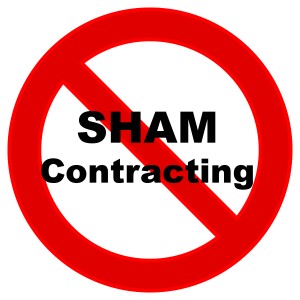Q&A: What is Sham Contracting?
By
Key Business Advisors
Human Resources
 KBA HR Advisor Ray Mather discusses sham contracting and the reasons against engaging in such practice.
KBA HR Advisor Ray Mather discusses sham contracting and the reasons against engaging in such practice.
Q: What is Sham Contracting?
A: Sham Contracting is “the practice of engaging workers as independent contractors, when they should really be regarded as employees”.[1]
Q: When should a worker really be regarded as an employee?
A: Not necessarily an easily answered question! There are many factors to be considered in determining whether a worker is an employee or independent contractor. These factors include:
- Degree of control the organisation has over how work is performed
- Ability of the worker to delegate to others
- Ability of the worker to refuse work
- Whether the worker builds goodwill for his/her business
- Whether the worker supplies own tools, equipment
- Whether the worker bears financial risk (profit/loss on each task)
- How the worker is paid (per hour, upon completion of task)
Some factors are more important than others (control is a particularly important factor) but there is no single factor or set number of factors which will determine whether a worker is an employee or contractor. It’s a matter of overall impression.
But, as the saying goes, ‘if it looks like a duck and sounds like a duck, it’s probably a duck’. Parties to a contract cannot “create something which has every feature of a rooster, but call it a duck and insist that everybody else recognise it as a duck”.[2]
Q: What might compel an organisation to engage in Sham Contracting?
A: The desire to avoid obligations or liabilities associated with employment for instance:
- entitlements under an Award or Enterprise Agreement (e.g. allowances, overtime, penalty rates)
- entitlements under the National Employment Standards (e.g. annual leave, personal/carer’s leave, redundancy pay)
- access to remedies for termination of employment (e.g. unfair dismissal)
- superannuation guarantee contributions
- payroll tax
- workers’ compensation or higher workers’ compensation insurance premiums.
Q: Why not engage in Sham Contracting?
A: An employer may be liable under the ‘sham arrangements’ provisions of the Fair Work Act 2009 (Cth).[3] An employer may be liable to pay penalties for:
- “misrepresenting to an employee or future employee that they are or will be an independent contractor, when in actual fact they are or will be an employee:
- dismissing or threatening to dismiss an employee to engage them as an independent contractor to perform the same or substantially the same work under a contract for services; and
- making a false statement attempting to persuade an employee or former employee to become an independent contractor to provide the same services or substantially the same services as were provided pursuant to their employment”.[4]
Penalties of up to $10,200 per breach for an individual and $51,000 per breach for a body corporate may apply.[5]
Q: Where to go for help?
A: It can difficult to determine whether a worker should be engaged as an employee or independent contractor. If you need help, contact the HR Team at Key Business Advisors on 1300 4 ADVICE.
[1] Andrew Stewart, Stewart’s Guide to Employment Law (The Federation Press, 2013) 397.
[2] Re Porter (1989) at 184 cited in Andrew Stewart, Stewart’s Guide to Employment Law (The Federation Press, 2013) 54.
[3] Sections 357-359, Fair Work Act 2009 (Cth).
[4] Herbert Smith Freehills, Guide to Employment and Workplace Relations in Australia 2014, 189.
[5] Herbert Smith Freehills, Guide to Employment and Workplace Relations in Australia 2014, 189.



